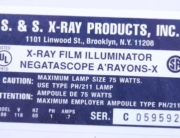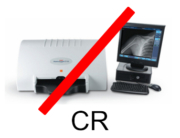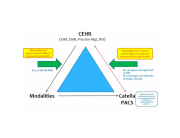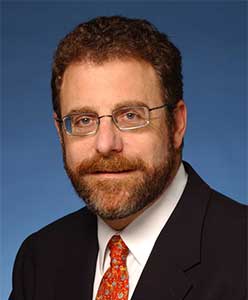Now I’m really mad. I’m a businessman but I’m also a citizen. I believe in capitalism but in the form that requires hard work and fair play.
So here’s the next blog “installment” about the new reimbursement rates for film, CR and DR.
As we have already discussed, the Consolidated Appropriations Act of 2015 was pushed by Varian, their trade lobbying group MITA and the American College of Radiology. Their motives were clearly stated as either pushing DR technology or defending interpretation rates for doctors.
But was there more? Could there have been more? I can’t find anything else discussed by the participants. When I spoke to be people involved with the legislation, they offered no further explanation. Why was DR considered better “digital” technology than CR? No answer. What about patient care, specifically radiation dosage? No answer. Did they know that some DR systems provide more radiation dosage than CR? No answer.
But perhaps the legislation was enacted to help to trim healthcare costs. So does creating a “fear” environment that will push CR to DR and incur significant new costs for practitioners and reduce the resale value of their current CR systems help cut costs? I don’t think so.
But here’s one “answer” provided by a major healthcare equipment company: If you do a large number of studies, DR can reduce technician time by 8 minutes per study. It could reduce one technician position if you did 14,063 studies per year. I figured that out by assuming a 50 week work year and 7 ½ hours of work per day (or should we not assume a lunch break?).
I think that this “savings” only applies to be busiest hospitals or imaging centers.
But wait – according to the MITA website, the reimbursement reductions only impact “certain outpatient radiography services that are delivered in physician offices, free-standing imaging centers, and hospital outpatient departments.”
It does not apply to inpatient services because again, according to the MITA website, “acute care hospitals are exempt from payment changes as they are reimbursed under a different payment system.”
So I would guess we can assume that this legislation was targeted at private practices, outpatient facilities, mobile client operators, chiropractors, pediatricians and others. That’s just where there are the largest numbers of CR’s in use.
I’m mad because I strongly believe that we should and can reduce healthcare costs. I believe this and also believe that those of us involved in the health care system can still make a good living. I don’t think we need to rig the system to make our customers buy something they do not need and that has no benefit (and that may actually be bad for patients).
Look, we all know that DR will eventually replace film and CR. It does not need a push.
Moreover, from our experience of the way one technology pushes the development of the next technology, “pushing” DR will only lead to an even newer technology that will be prematurely foisted on buyers even before the “new” rubs off of DR.
Let’s get the facts out and continue to help ourselves and our customers make money with CR.
Remember, the rate reduction is just on the technical portion of the payment and only for outpatient services.
When asked what this meant, one expert used this example: A typical chest study might have a “retail” charge of $60.00 but the government might typically reimburse this at $24.00. Using this information, we can produce a per study charge reduction chart below:
|
Calendar Year |
CR Reduction | Reduced Amount |
| 2017 | ||
| 2018 | 7% | – $1.68 |
| 2019 | 7% | – $1.68 |
| 2020 | 7% | – $1.68 |
| 2021 | 7% | – $1.68 |
| 2022 | 7% | – $1.68 |
| 2023 & Beyond | 10% |
– $2.40 |
Applying this to various numbers of studies per year for just 2018, we can calculate the “breakeven” number of years for a DR upgrade*.
| Studies/Calendar Year | CR Reduction | Breakeven in Years** |
| 1,000 | $ 1,680 | 23 years 10 months |
| 2,500 | $ 4,200 | 9 years 7 month |
| 5,000 | $ 8,400 | 4 years 10 months |
| 10,000 | $ 16,800 | 2 years 5 months |
| 14,063 | $ 23,626 | 1 year 8 months |
| 25,000 | $ 42,000 | 1 year |
* One dealer estimated that with service and drop insurance added, the cost of a DR upgrade can be as much as $40,000 even when the CR “trade in” value is considered. If you think that is too high or too low, change it. Also you might add in “tax savings” due to new equipment depreciation although I often think of this as false savings and I’d rather have this money in my pocket.
** All years rounded down to nearest “month”.
This chart makes a very compelling case for small practices not to dump their CR’s and for film users to move to low cost pre-owned CR systems.
If that does not convince you, consider what $40,000 would earn if you just invested that amount today through 2022 when the CR reduction increases to 10%.
Let’s use stock market returns for this analysis. Here’s what history tells us about returns in the stock market: Over the stock market history corporate earnings have gone up an average of 7% per year and the inflation history of the markets shows that inflation has averaged around 4% per year.
That makes a $55,000 investment today worth $88,318 at the end of 2022 or a $33,318 gain.
Or said another way, a practice would have to do 19,832 studies to create an equal saving changing from CR to DR.
So even though this is the “level playing field” we have,
I am hopeful you now have some real numbers to help your smaller customers and yourselves navigate around this ridiculous Consolidated Appropriations Act of 2015 brought to you by a manufacturer, two lobbying groups and your elected delegates in Congress.
Have a comment? I’d love to hear from you.










Excellent article, Dan. I would circulate this among some of the CR mfrs. The worst part of this is that it will increase costs of healthcare. Appears that government and cronies don’t really care about that.
I can now buy a CR and I can sell it at good price that DR can’t really compare with, especially when drop coverage is included. . Would be interesting to see a CR/DR dose comparison done at “typical” exposure techniques that might demonstrate the case for/against CR.
I recommend DR to practices who do about 35 patient studies per day. Below that, I tell them it’s not even close to justification (for a start up or a practice that has owned CR for over 5 years).
For one, I will never knowingly buy a Varian DR product again. Wasn’t too happy with the first one I bought years ago.
I would like to have your article in a “hand out” that I can give to urgent care and small type practices…Is that available? Best regards…………Ted
Great info Dan!
Good article Dan. I’m still baffled that no one has put together a group of affected people that will raise awareness to this ridiculous legislation in Washington. Our silence screams volumes in congress.
Craig Z.
Hello Dan,
Great article. Do you mind if I link or reference it from my website?
I have been consulting for Imaging Centers for over 10 years. I managed 16 hospitals Clinical Engineering departments and assets. I smelled a rat right away, you just confirmed it.
Best,
Darron
Excellent info Dan…thank you!
Melodie T
Dan …first thank you for at least bringing up the facts about CR vs DR…….from costs to radiation dosage…when I met with CMS years ago as head of a national moblie x-ray organization they were all about letting the manufacturers determine reimbursement based on equipment…then the xr29 rule shows up…another added cost that does NOT in anyway give information for the referring doctor because they have no idea about dosage…nor does it ever take into account exposure from natural radiation..if you are an accredited facility and the referring physician orders the test..then whats the issue unless the equipment is owned by the referring…next and very important hospital reimbursement is at least 4x that of a free standing center, yet we get cut every year as or costs go up for licensing, salaries insurance etc…I have been a truly independent facility for 33 years of my 40 years as a technologist and everything points to get rid of the little guy…insurance companies raise premiums, deductibles and then pay us less….yes something really does smell!!!!